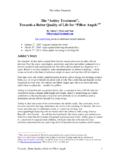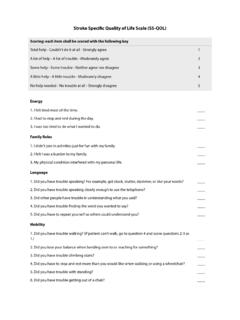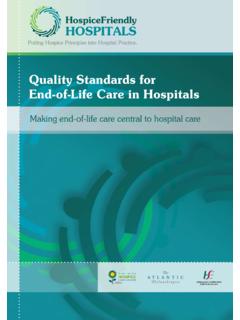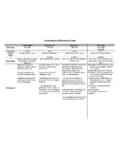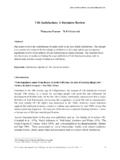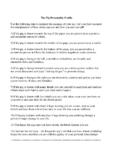Transcription of Pet's Quality of Life Scale - Lap of Love
1 | 1-855-933-5683 Pet's Quality of life Scale When evaluating the Quality of life of your pet, personalized patient and family information is important when reaching an educated, informed, and supported choice that fits not only your pet s medical condition but also your wishes and expectations. In short, Quality of life applies not only to the pet; it also applies to you! Score each subsection on a Scale of 0-2: 0 = agree with statement (describes my pet) 1 = some changes seen 2 = disagree with statement (does not describe my pet) Social Functions Physical Health __ Desire to be with the family has not changed __ No changes in breathing or panting patterns __ Interacts normally with family or other pets ( , no increased aggression or other changes) __ No outward signs of pain (excessive panting, pacing, and whining are most commonly seen)
2 __ No pacing around the house __ My pet s overall condition has not changed recently Mental Health Natural Functions __ Enjoys normal play activities __ Appetite has stayed the same __ Still dislikes the same thing ( , still hates the mailman = 0, or doesn t bark at the mailman anymore = 2) __ Drinking has stayed the same __ No outward signs of stress or anxiety __ Normal urination habits __ Does not seem confused or apathetic __ Normal bowel movement habits __ Nighttime activity is normal, no changes seen __ Ability to ambulate (walk around) has stayed the same Results: 0-8 Quality of life is most likely adequate.
3 No medical intervention required yet, but guidance from your veterinarian may help you identify signs to look for in the future. 9 16 Quality of life is questionable and medical intervention is suggested. Your pet would certainly benefit from veterinary oversight and guidance to evaluate the disease process he/she is experiencing. 17-36 Quality of life is a definite concern. Changes will likely become more progressive and more severe in the near future. Veterinary guidance will help you better understand the end stages of your pet s disease process in order to make a more informed decision of whether to continue hospice care or elect peaceful euthanasia.
4 | 1-855-933-5683 Family s Concerns Score each section on a Scale of 0-2: 0 = I am not concerned at this time. 1 = There is some concern. 2 = I am concerned about this. I am concerned about the following things: __ Pet suffering __ Desire to perform nursing care for your pet __ Pet dying alone __ Ability to perform nursing care for your pet __ Not knowing the right time to euthanize __ Coping with loss __ Concern for other household animals __ Concern for other members of the family ( children) Results: 0-4 Your concerns are minimal at this time. You have either accepted the inevitable loss of your pet and understand what lies ahead, or have not yet given it much thought.
5 If you have not considered these things, now is the time to begin evaluating your own concerns and limitations 5-9 Your concerns are mounting. Begin your search for information by educating yourself on your pet s condition; it s the best way to ensure you are prepared for the emotional changes ahead 10-16 Although you may not place much value on your own Quality of life , your concerns about the changes in your pet are valid. Now is the time to prepare yourself and to build a support system around you. Veterinary guidance will help you prepare for the medical changes in your pet while counselors and other health professionals can begin helping you with anticipatory grief Discuss these questions below, and the entire Quality of life Scale , with your veterinarian.
6 Below are some open-ended questions that assist gauge your family s time, emotional, and (when appropriate, financial) budgets: 1. Have you ever been through the loss of a pet before? If so, what was your experience (good or bad, and why)? 2. What do you hope the life expectancy of your pet will be? What do you think it will be? 3. What is the ideal situation you wish for your pet s end of life experience? (at home, pass away in her sleep, etc.) Suggestions on using this Quality of life Scale : 1. Complete the Scale at different times of the day, note circadian fluctuations in well-being. (We find most pets tend to do worse at night and better during the day.)
7 2. Request multiple members of the family complete the Scale ; compare observations. 3. Take periodic photos of your pet to help you remember their physical appearance. Resources: 1. AAHA/AAFP Pain Management Guidelines for Dogs and Cats, 2. Online hospice journal and Quality of life Scale .
